Bulk Solids Stacking Strategy of a Rectangular Ship Cabin
Abstract
1. Introduction
2. Strategy Design of Bulk Solids Stacking
2.1. Stacking Route Planning
- According to the stacking site size and the total loading capacity, the stacking locations and the corresponding stacking volume at each stacking location are planned.
- A stacker stops at a certain stacking point for continuous loading bulk solids to form a certain size of a stockpile, and then the stacker moves to the next stacking point to continue loading bulk solids.
2.2. Analysis on the Stacking Locations
2.3. Modelling of Bulk Solids Curved Stockpile
3. Determination of Stacking Volume and Algorithm Optimization
- (1)
- To find the minimum value in the interval [a, b], let , , and compare the size of F(x1) and F(x2).
- (2)
- If F(x1) > F(x2), then remove the interval [a, x1], let , and accelerate the new interval [c, b]; let , k is the acceleration trend, and is the acceleration iterations. After acceleration, if x1 < x2, cancel the acceleration.
- (3)
- If F(x1) < F(x2), then remove the interval [x2, b], let , and accelerate the new interval [a, c]; let , k is the acceleration trend, and is the accelerate iterations. After acceleration, if x1 > x2, cancel the acceleration.
4. Experimental Verification and Analysis
4.1. Construction of Experimental Platform
4.2. Analysis of Experimental Results
5. Conclusions
- (1)
- A stacking strategy is proposed for the flat stacking of bulk solids in which the stacking locations and the shape and volume of the stockpile at each location are considered to accurately model the actual stacking profile of the bulk solids during operation.
- (2)
- An improved golden section algorithm is adopted for the calculation of the bulk solids stockpile at each stacking location. The search interval of the stockpile radius aiming at flat stacking is preliminarily determined by the advance and retreat method. A self-influence factor is introduced to golden section algorithm to improve the searching speed of the optimal stockpile radius and the related stockpile volume.
- (3)
- The proposed stacking strategy is verified by bulk solids stacking experiments. The flatness of the stockpile is evaluated by the relative error of the heights of the pile peaks and pile valleys relative to their average heights. For five different materials tested, the average relative errors are within 5%, indicating the effectiveness and applicability of the stacking strategy.
Author Contributions
Funding
Institutional Review Board Statement
Informed Consent Statement
Data Availability Statement
Conflicts of Interest
References
- Angelelli, E.; Kalinowski, T.; Kapoor, R.; Savelsbergh, M.-W.-P. A reclaimer scheduling problem arising in coal stockyard management. J. Sched. 2016, 19, 563–582. [Google Scholar] [CrossRef]
- Kalinowski, T.; Kapoor, R.; Savelsbergh, M.W.P. Scheduling reclaimers serving a stock pad at a coal terminal. J. Sched. 2017, 20, 85–101. [Google Scholar] [CrossRef]
- Ünsal, Ö. Reclaimer scheduling in dry bulk terminals. IEEE Access 2020, 8, 96294–96303. [Google Scholar] [CrossRef]
- Pang, X.S.; Su, Z.R. Bulk Unloading Crane Monitoring System’s Design and Development Based on Kingview. Appl. Mech. Mater. 2013, 423, 2431–2434. [Google Scholar]
- Xue, Y.T.; Branch, G. Design of Unmanned Intelligent Shipping System for Bulk Cargo Based on Quantitative Measurement. Port Oper. 2019, 4, 50–52. [Google Scholar]
- Sun, D.F.; Meng, Y.; Tang, L.X.; Liu, J.Y.; Huang, B.B.; Yang, J.F. Storage space allocation problem at inland bulk material stockyard. Transp. Res. Part E Logist. Transp. Rev. 2020, 134, 101856. [Google Scholar] [CrossRef]
- Tang, L.X.; Sun, D.F.; Liu, J.Y. Integrated storage space allocation and ship scheduling problem in bulk cargo terminals. IIE Trans. 2016, 48, 428–439. [Google Scholar] [CrossRef]
- Tang, X.Y.; Jin, J.G.; Shi, X.N. Stockyard storage space allocation in large iron ore terminals. Comput. Ind. Eng. 2022, 164, 107911. [Google Scholar] [CrossRef]
- Rekik, I.; Elkosantini, S. A multi agent system for the online container stacking in seaport terminals. J. Comput. Sci. 2019, 35, 12–24. [Google Scholar] [CrossRef]
- Gharehgozli, A.; Zaerpour, N. Stacking outbound barge containers in an automated deep-sea terminal. Eur. J. Oper. Res. 2018, 267, 977–995. [Google Scholar] [CrossRef]
- Maldonado, S.; González-Ramírez, R.G.; Quijada, F.; Ramírez-Nafarrate, A. Analytics meets port logistics: A decision support system for container stacking operations. Decis. Support Syst. 2019, 121, 84–93. [Google Scholar] [CrossRef]
- Abdul Rahman, N.S.F.; Ismail, A.; Lun, V.Y.H. Preliminary study on new container stacking/storage system due to space limitations in container yard. Marit. Bus. Rev. 2016, 1, 21–39. [Google Scholar] [CrossRef]
- Ambrosino, D.; Xie, H. Optimization Approaches for Defining Storage Strategies in Maritime Container Terminals. Soft Comput. 2022, 27, 4125–4137. [Google Scholar] [CrossRef]
- Einicke, G.A. High-Order Filtering of LIDAR Data to Assist Coal Shiploading. IEEE Trans. Aerosp. Electron. Syst. 2017, 53, 1481–1488. [Google Scholar] [CrossRef]
- Le Carrer, N.; Ferson, S.; Green, P.L. Optimising cargo loading and ship scheduling in tidal areas. Eur. J. Oper. Res. 2020, 280, 1082–1094. [Google Scholar] [CrossRef]
- Celik, E.; Akyuz, E. An interval type-2 fuzzy AHP and TOPSIS methods for decision-making problems in maritime transportation engineering: The case of ship loader. Ocean. Eng. 2018, 155, 371–381. [Google Scholar] [CrossRef]
- Schulz, D.; Schwindt, N.; Schmidt, E.; Kruggel-Emden, H. Modelling of dust emissions induced by flow over stockpiles and through packed beds. Particuology 2020, 59, 55–63. [Google Scholar] [CrossRef]
- Li, C.Z.; Honeyands, T.; O’Dea, D.; Moreno-Atanasio, R. The angle of repose and size segregation of iron ore granules: DEM analysis and experimental investigation. Powder Technol. 2017, 320, 257–272. [Google Scholar] [CrossRef]
- Al-Hashemi, H.M.B.; Al-Amoudi, O.S.B. A review on the angle of repose of granular materials. Powder Technol. 2018, 330, 397–417. [Google Scholar] [CrossRef]
- Huang, Z.H.; Miao, X.H. Optimization Calculation Method; Science Press: Beijing, China, 2015. [Google Scholar]
- Zhang, L.W.; Dan, F. Optimization Method; Science Press: Beijing, China, 2018. [Google Scholar]
- Kheldoun, A.; Bradai, R.; Boukenoui, R.; Mellit, A. A new golden section method-based maximum power point tracking algorithm for photovoltaic systems. Energy Convers. Manag. 2016, 111, 125–136. [Google Scholar] [CrossRef]
- Song, J.L.; Qian, F.C. The global optimization method based on golden-section. Comput. Eng. Appl. 2005, 48, 95–96. [Google Scholar]
- Zhang, G.Z.; Xiang, Y.H.; Guo, H.X.; Nie, Y.H. Structural reliability and its sensitivity analysis based on the saddle point approximation-line sampling method by dichotomy of golden section. Eng. Rev. 2019, 39, 11–20. [Google Scholar] [CrossRef]
- Xue, L.; Ling, X.; Yang, S.S. Mechanical behaviour and strain rate sensitivity analysis of ta2 by the small punch test. Theor. Appl. Fract. Mech. 2019, 99, 9–17. [Google Scholar] [CrossRef]
- Meng, S.; Kang, J.S.; Chi, K.; Die, X.P. Gearbox fault diagnosis through quantum particle swarm optimization algorithm and kernel extreme learning machine. J. Vibroeng. 2020, 22, 1399–1414. [Google Scholar] [CrossRef]
- Zhang, E.Z.; Chen, Q.W. Multi-objective reliability redundancy allocation in an interval environment using particle swarm optimization. Reliab. Eng. Syst. Saf. 2016, 145, 83–92. [Google Scholar] [CrossRef]
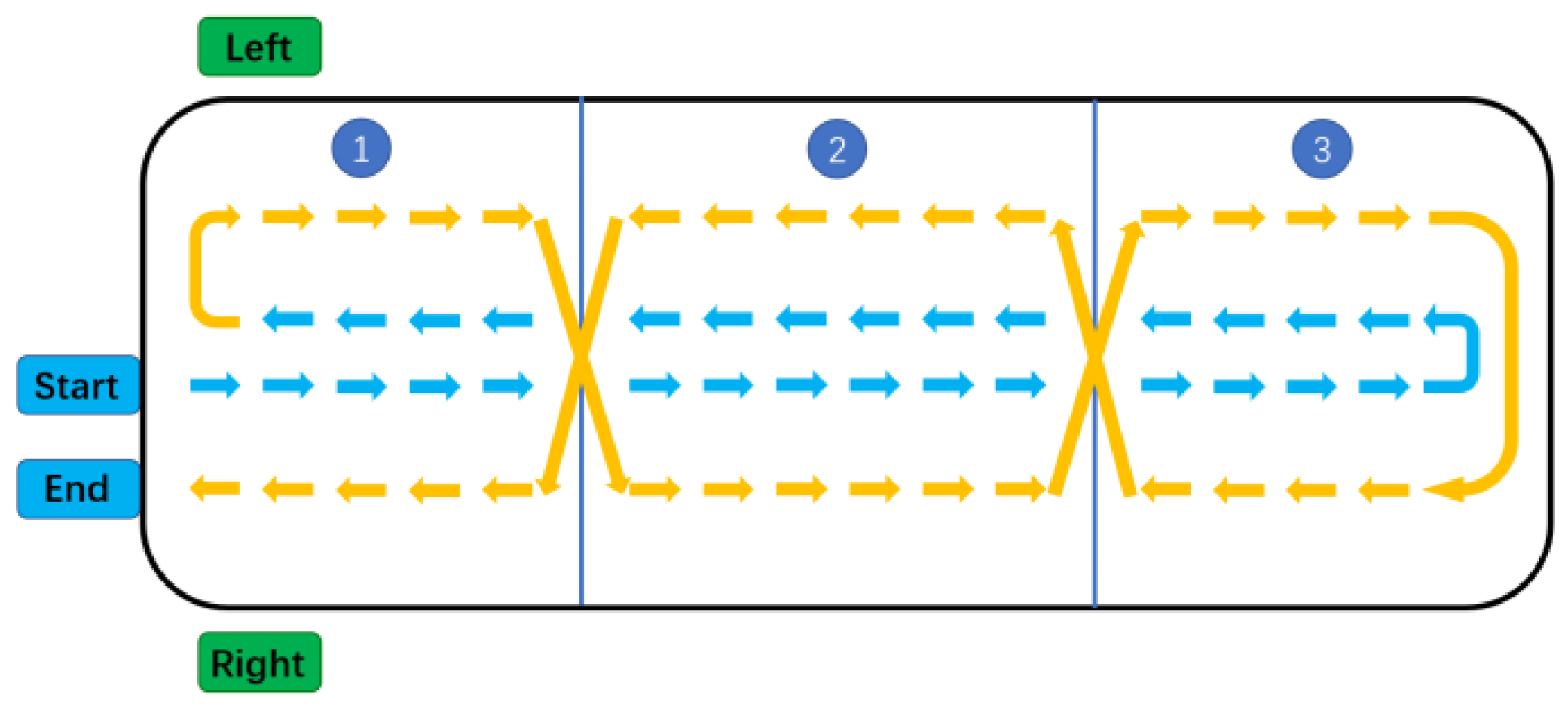

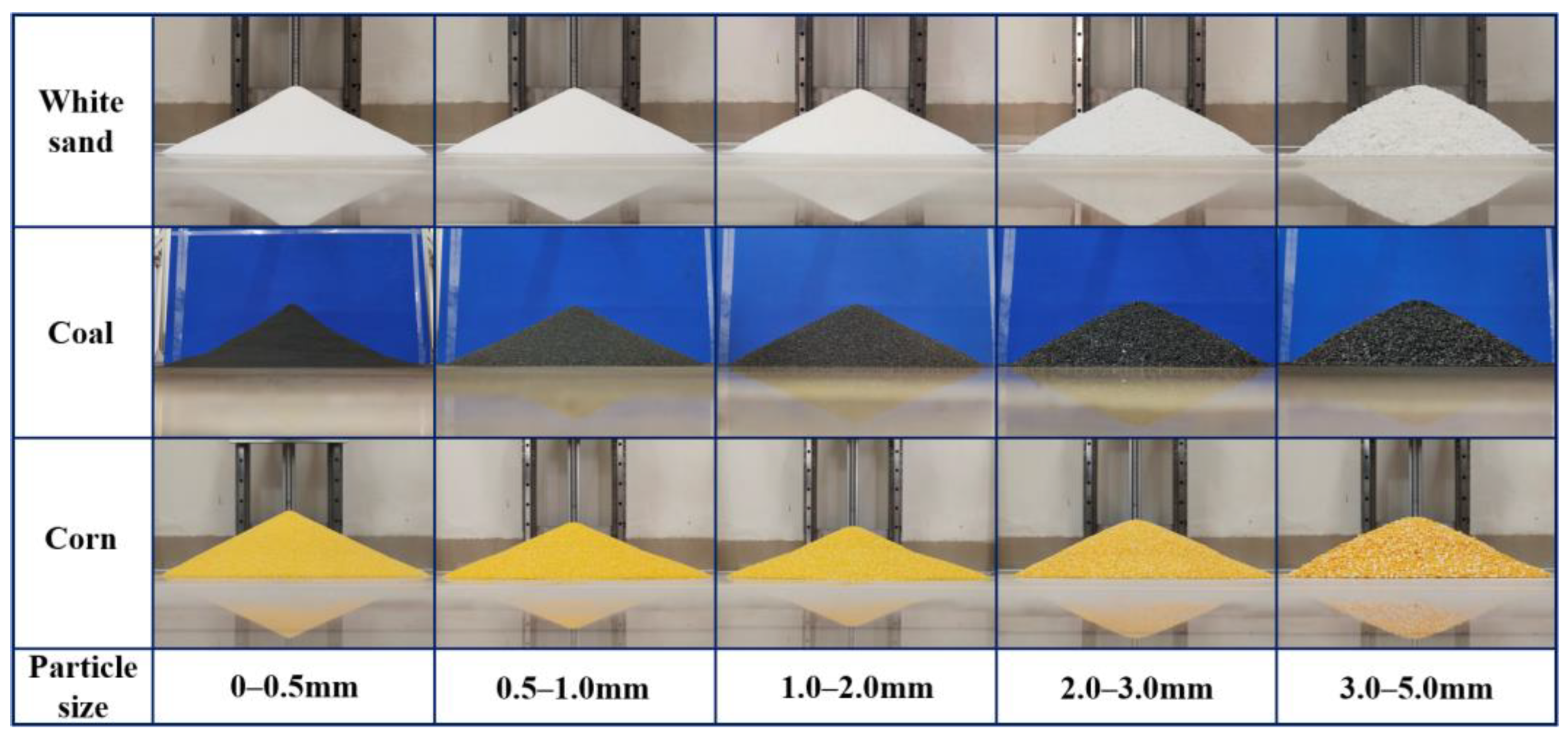

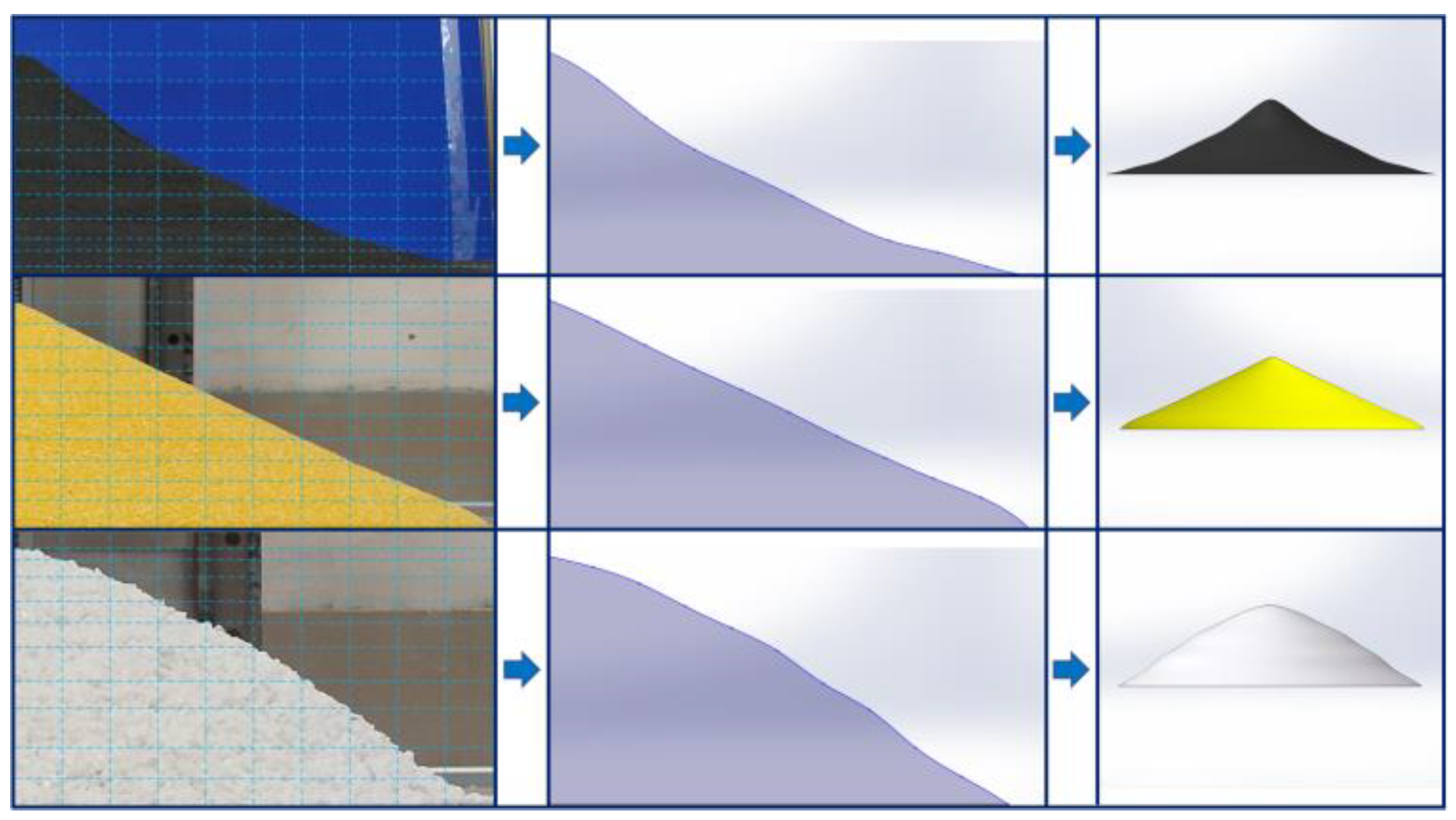
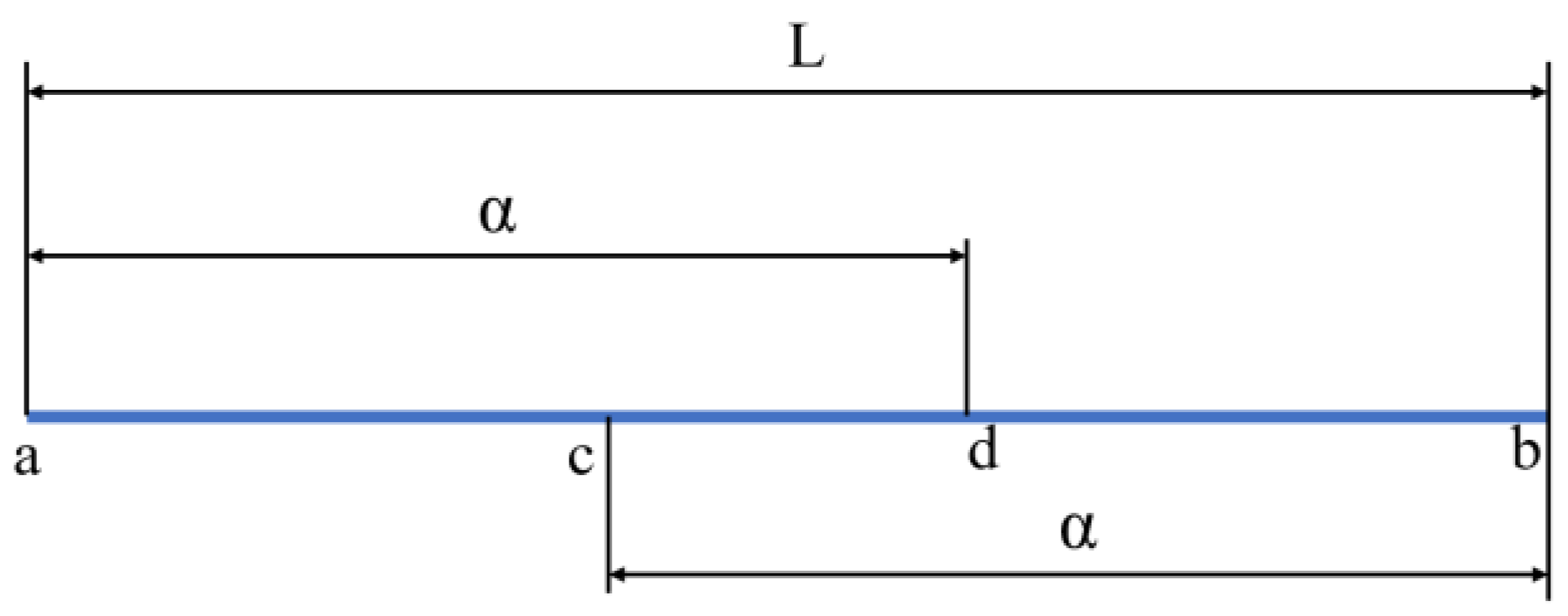
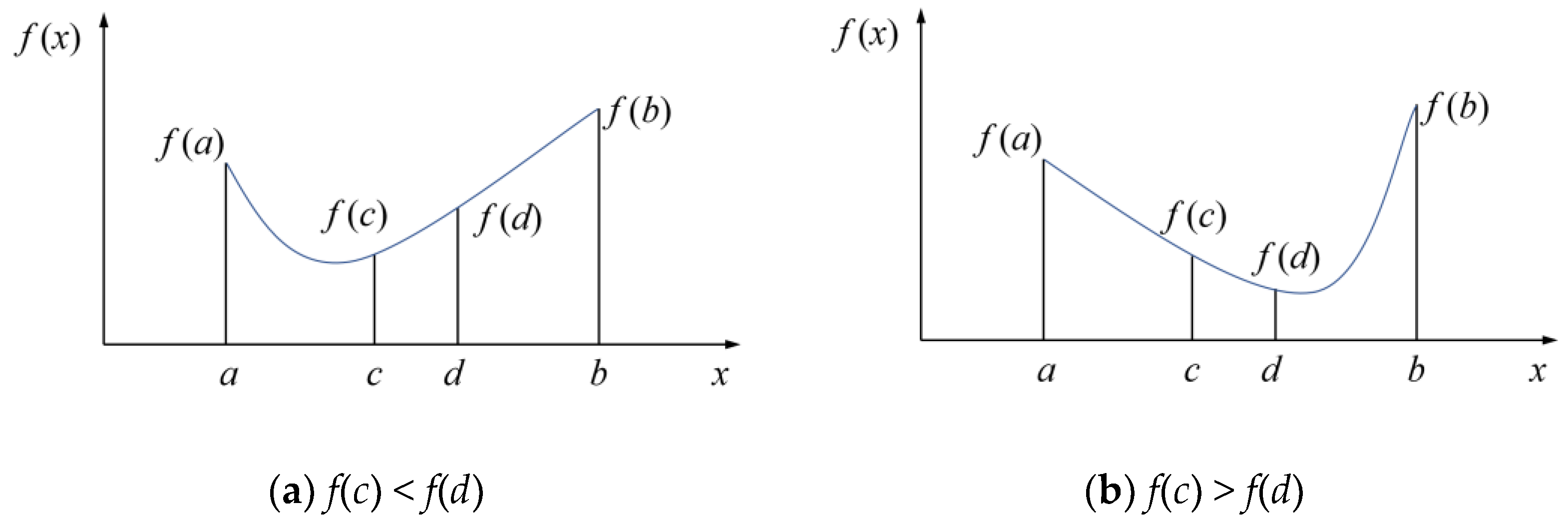
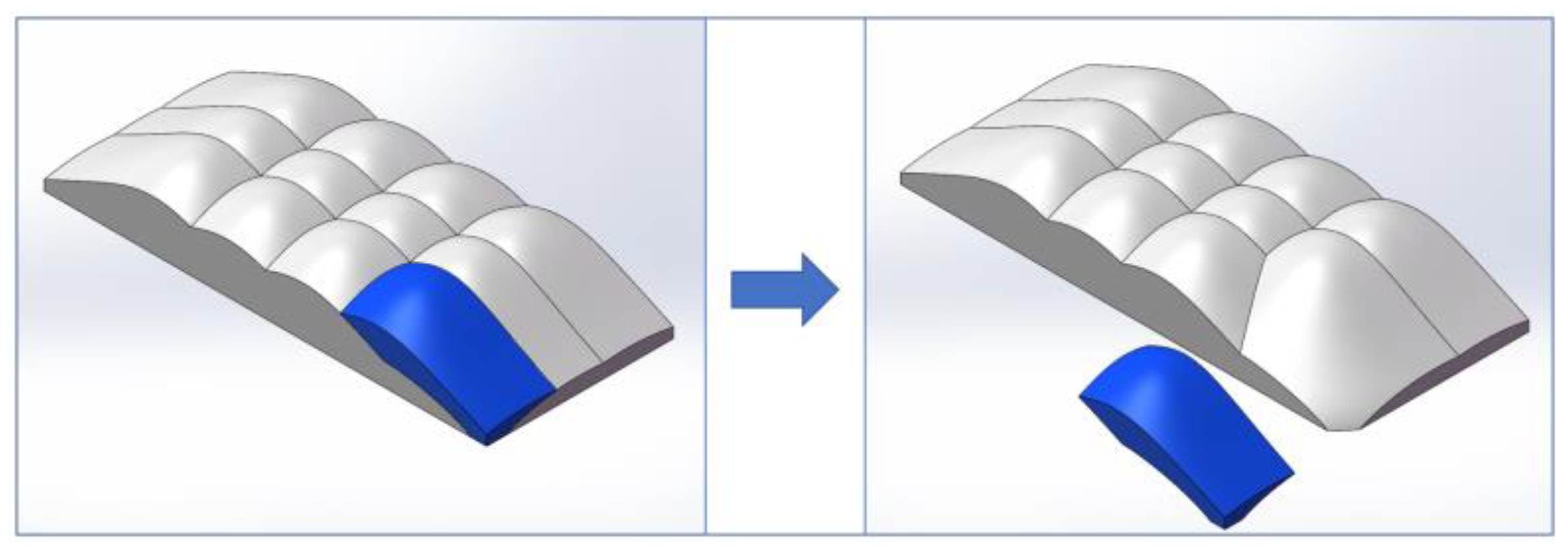
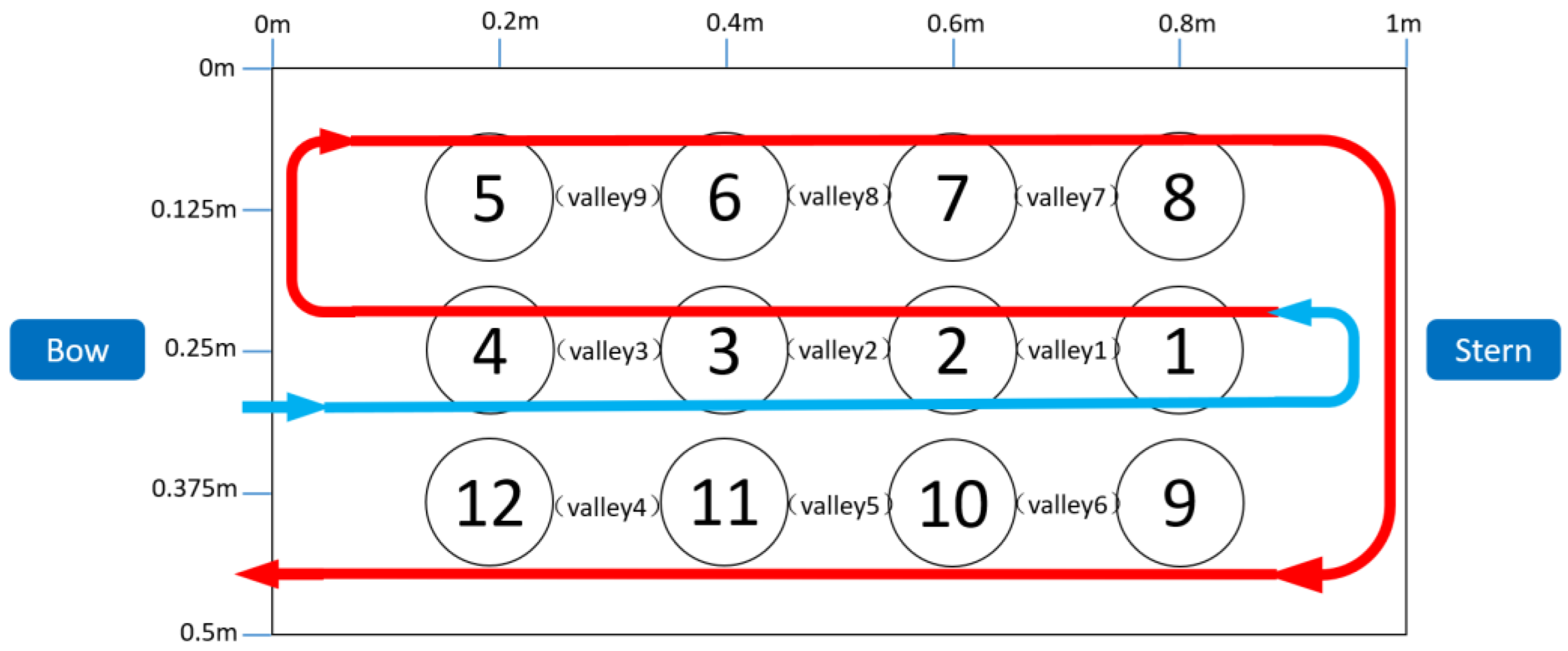

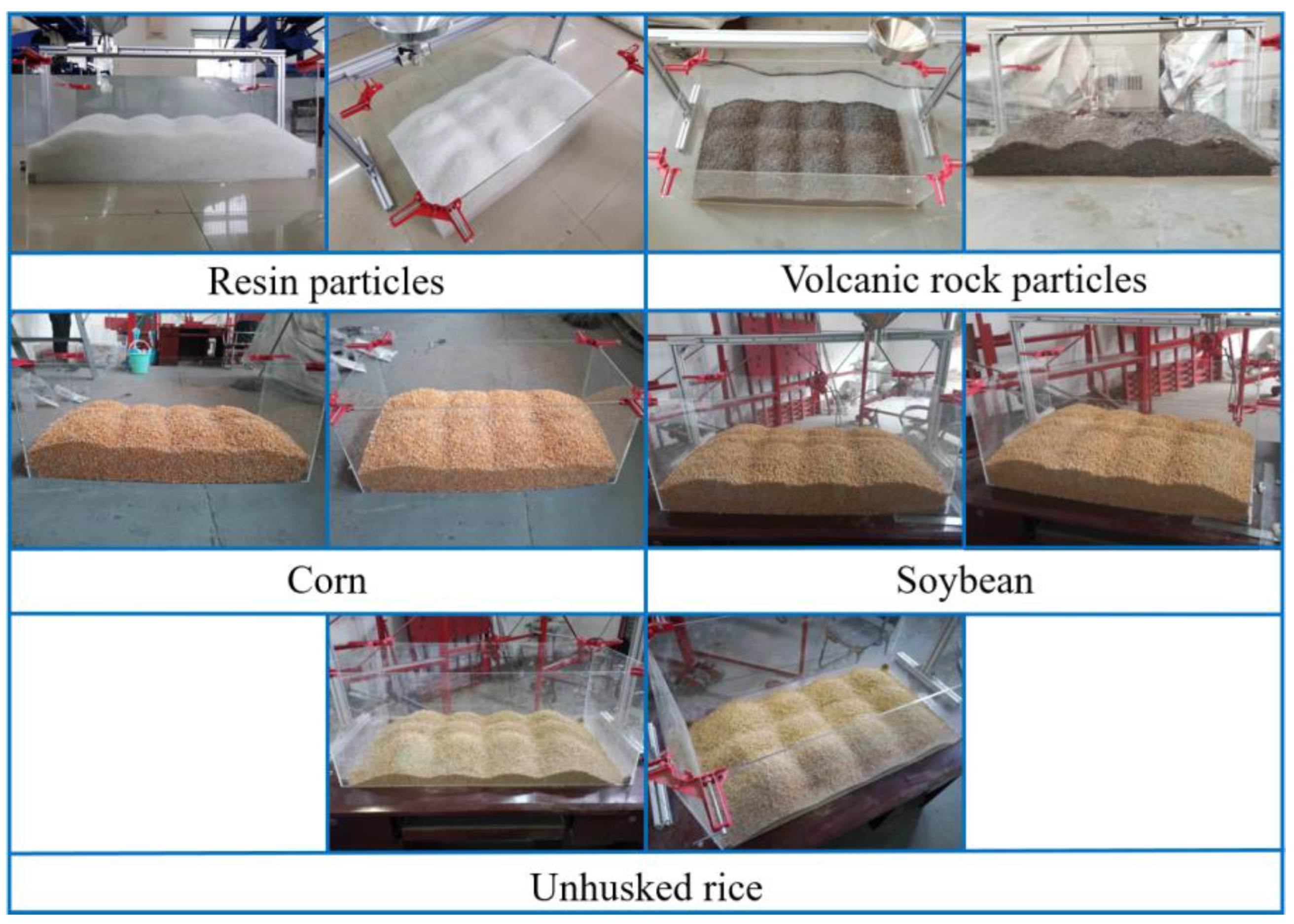
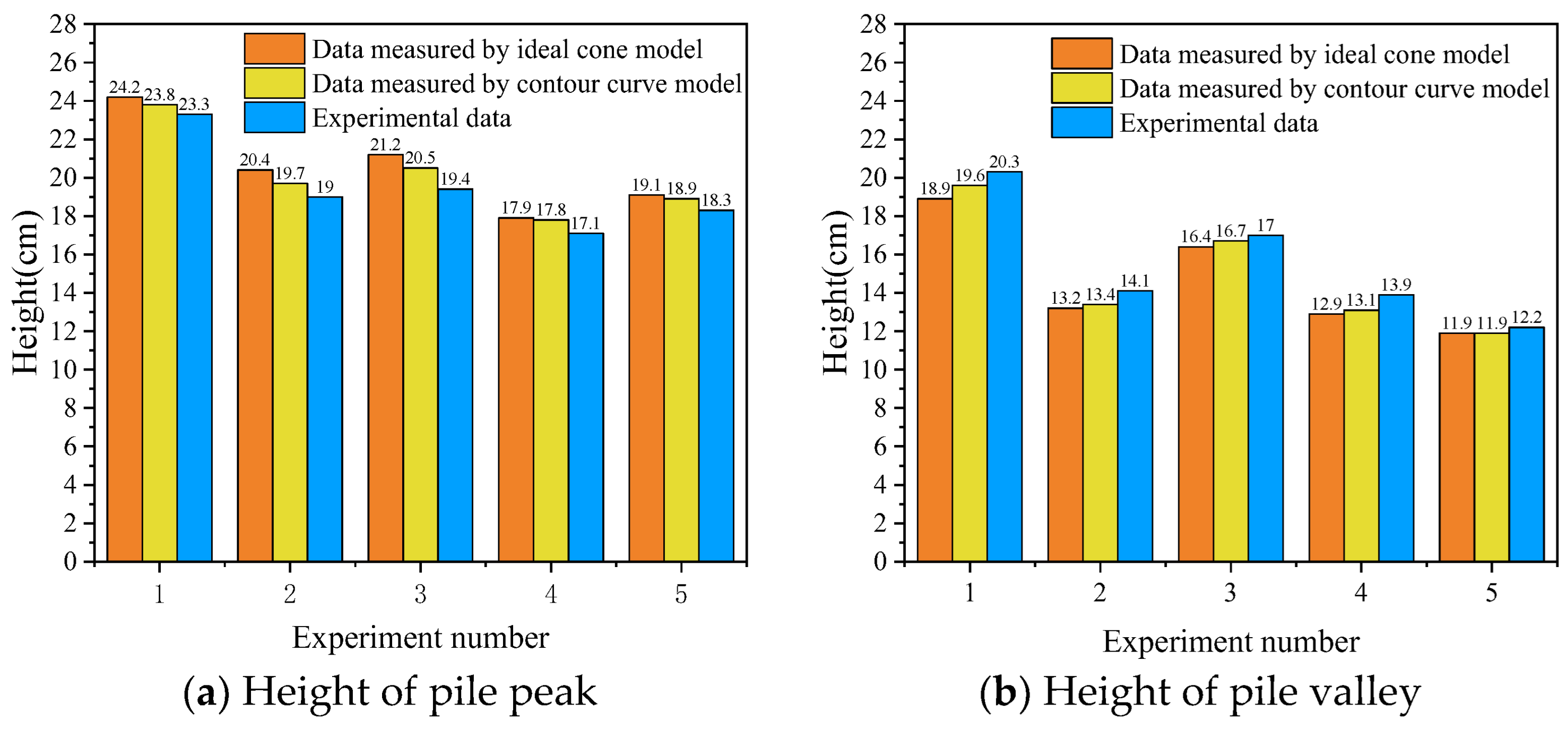
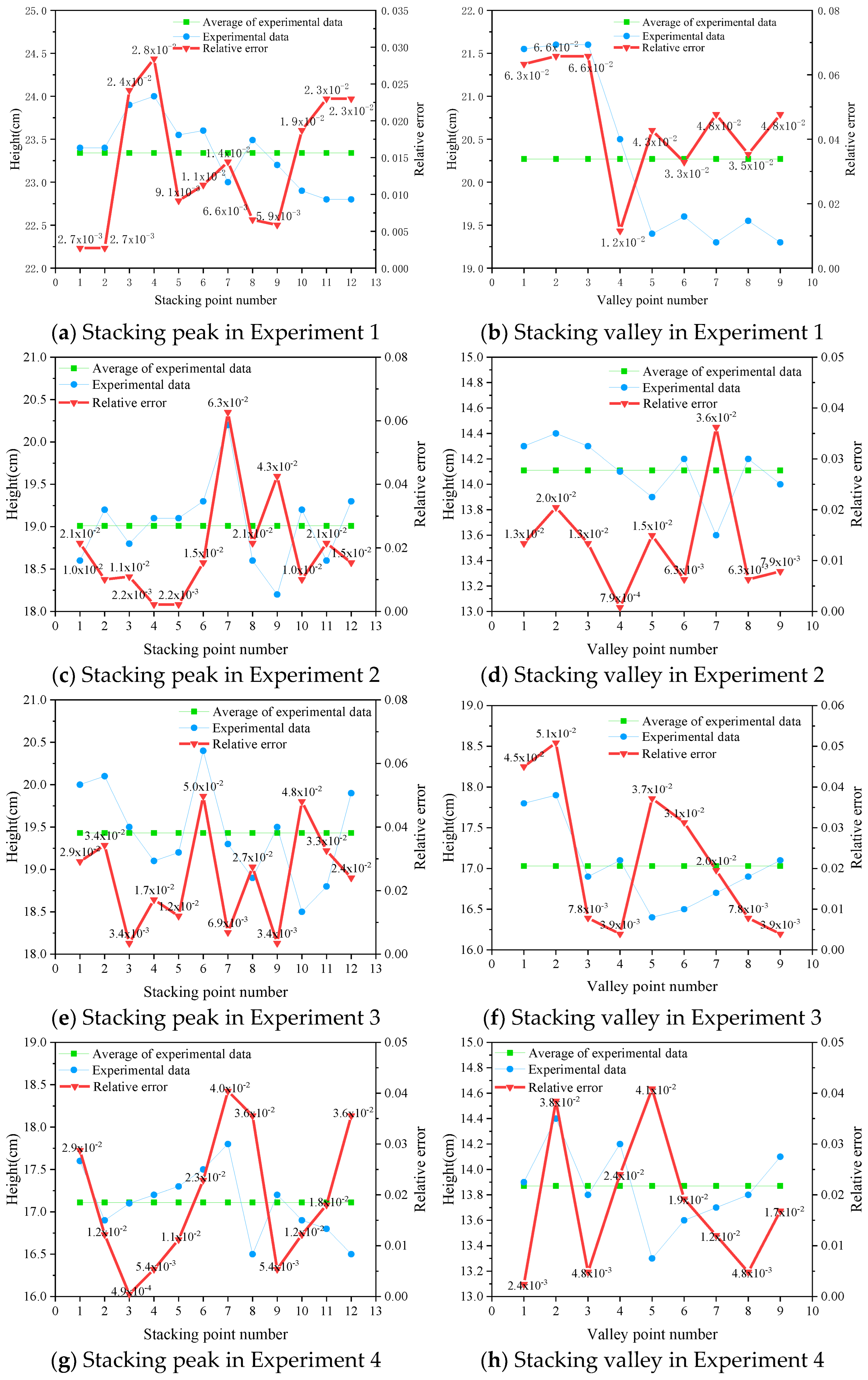

| Parameter (Unit) | Value | ||||
|---|---|---|---|---|---|
| Materials | Resin particles | Volcanic rock | Corn | Soybean | Unhusked rice |
| Density (kg/m3) | 582 | 942 | 773 | 750 | 600 |
| Weight (kg) | 56.25 | 65 | 65 | 57.5 | 20 |
| Particle radius (m) | 2 × 10−3 | 3 × 10−3 | 4 × 10−3 | 2.5 × 10−3 | 2 × 10−3 |
| Cabin size (m) | 1 × 0.5 × 0.4 | 1 × 0.5 × 0.4 | 1 × 0.5 × 0.4 | 1 × 0.5 × 0.4 | 1 × 0.5 × 0.4 |
Disclaimer/Publisher’s Note: The statements, opinions and data contained in all publications are solely those of the individual author(s) and contributor(s) and not of MDPI and/or the editor(s). MDPI and/or the editor(s) disclaim responsibility for any injury to people or property resulting from any ideas, methods, instructions or products referred to in the content. |
© 2023 by the authors. Licensee MDPI, Basel, Switzerland. This article is an open access article distributed under the terms and conditions of the Creative Commons Attribution (CC BY) license (https://creativecommons.org/licenses/by/4.0/).
Share and Cite
Yuan, J.; Li, D.; Shen, J.; Jin, C.; Yan, J.; Xu, C. Bulk Solids Stacking Strategy of a Rectangular Ship Cabin. Appl. Sci. 2023, 13, 3940. https://doi.org/10.3390/app13063940
Yuan J, Li D, Shen J, Jin C, Yan J, Xu C. Bulk Solids Stacking Strategy of a Rectangular Ship Cabin. Applied Sciences. 2023; 13(6):3940. https://doi.org/10.3390/app13063940
Chicago/Turabian StyleYuan, Jianming, Dongxu Li, Jiahe Shen, Chenglong Jin, Jiahao Yan, and Chang Xu. 2023. "Bulk Solids Stacking Strategy of a Rectangular Ship Cabin" Applied Sciences 13, no. 6: 3940. https://doi.org/10.3390/app13063940
APA StyleYuan, J., Li, D., Shen, J., Jin, C., Yan, J., & Xu, C. (2023). Bulk Solids Stacking Strategy of a Rectangular Ship Cabin. Applied Sciences, 13(6), 3940. https://doi.org/10.3390/app13063940





